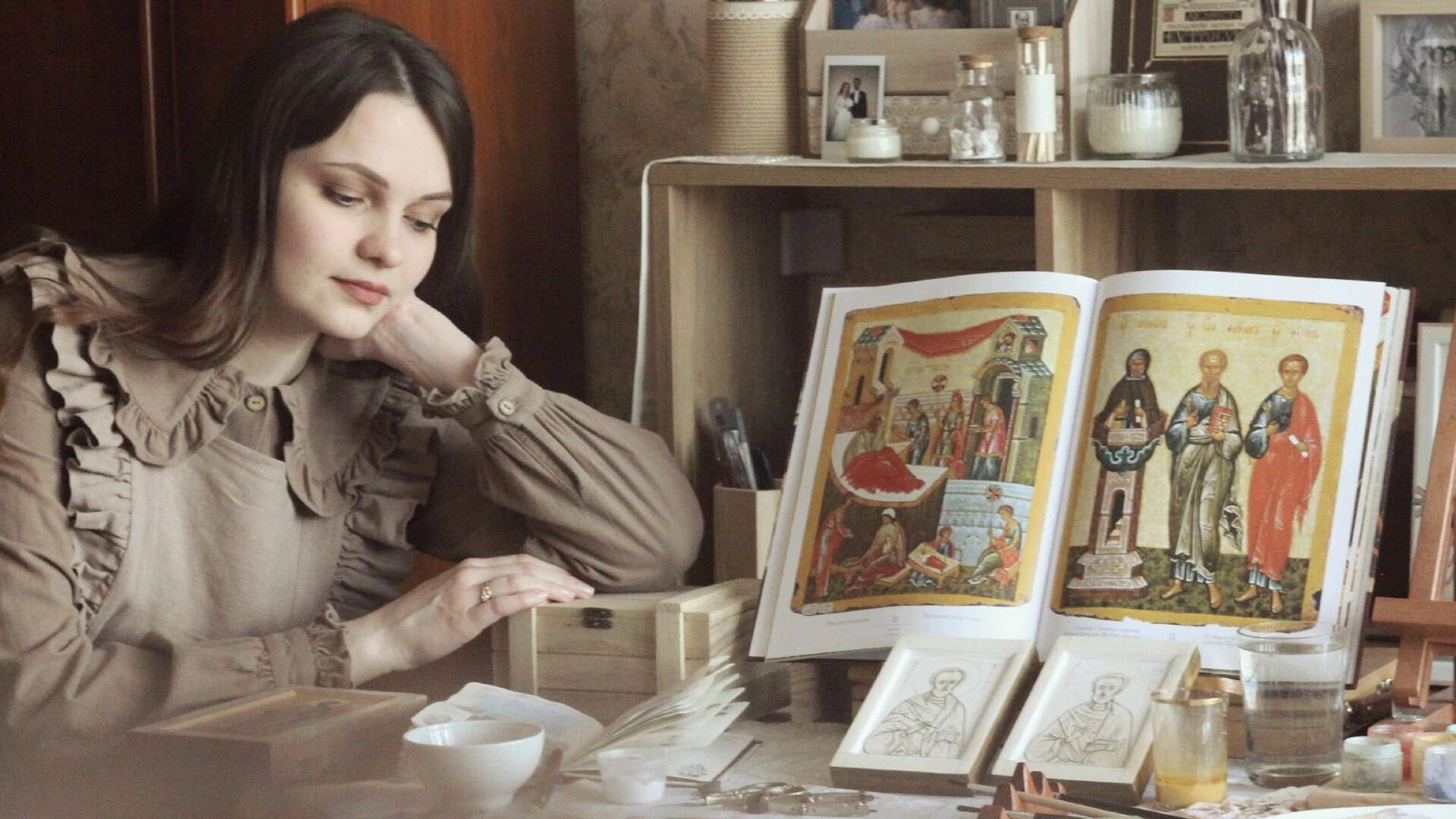
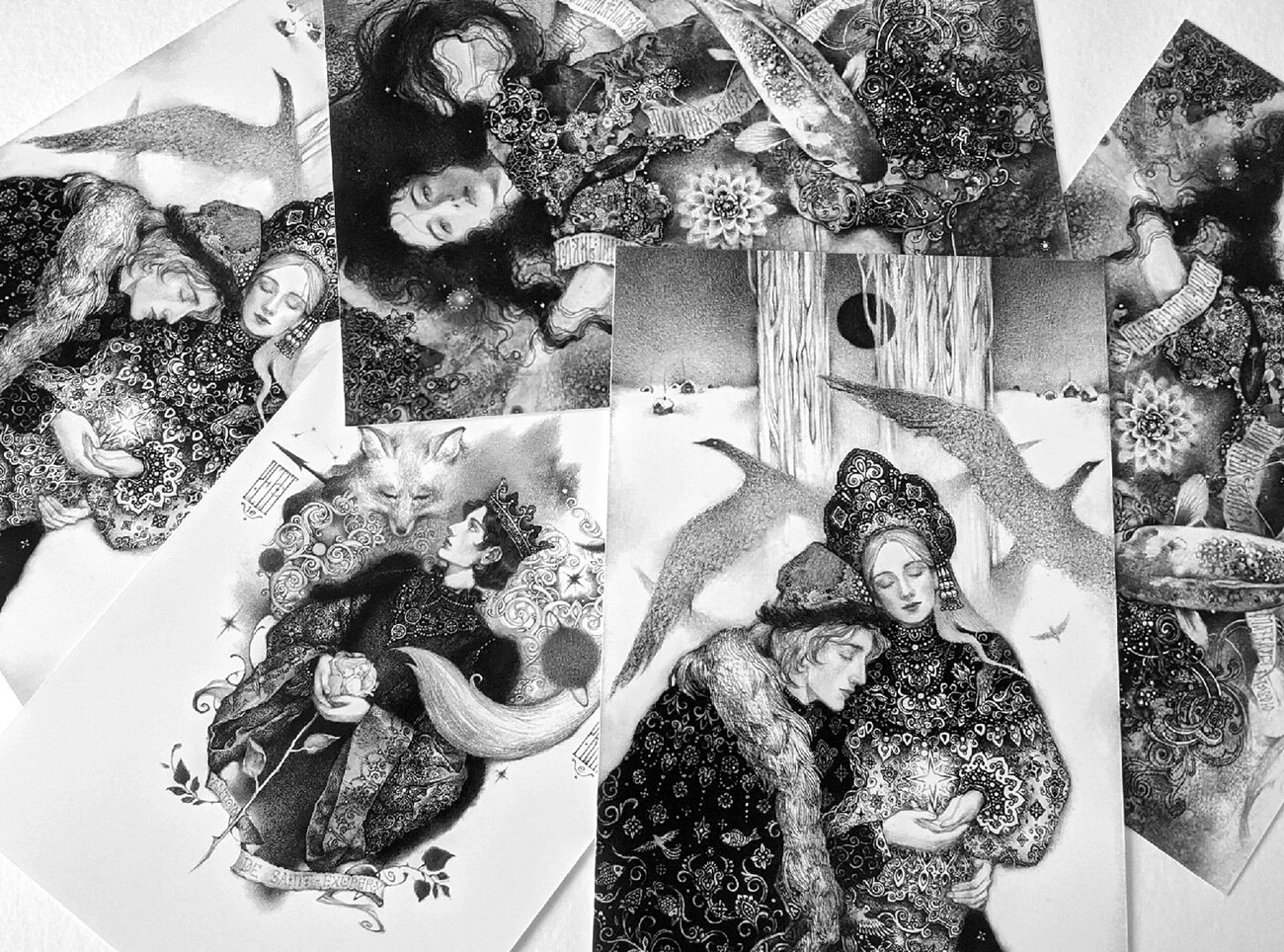
Anna's graphic arts.
Anna KornilovaTo the uninitiated, it often seems that all Orthodox icons are similar to each other. Indeed, the canons prevent iconography from losing the sacredness of images: reverse perspective, flat light shadows, the absence of external light sources, canonical schemes for depicting various sacred subjects and the saints themselves. This achieves rigor and prayerfulness.
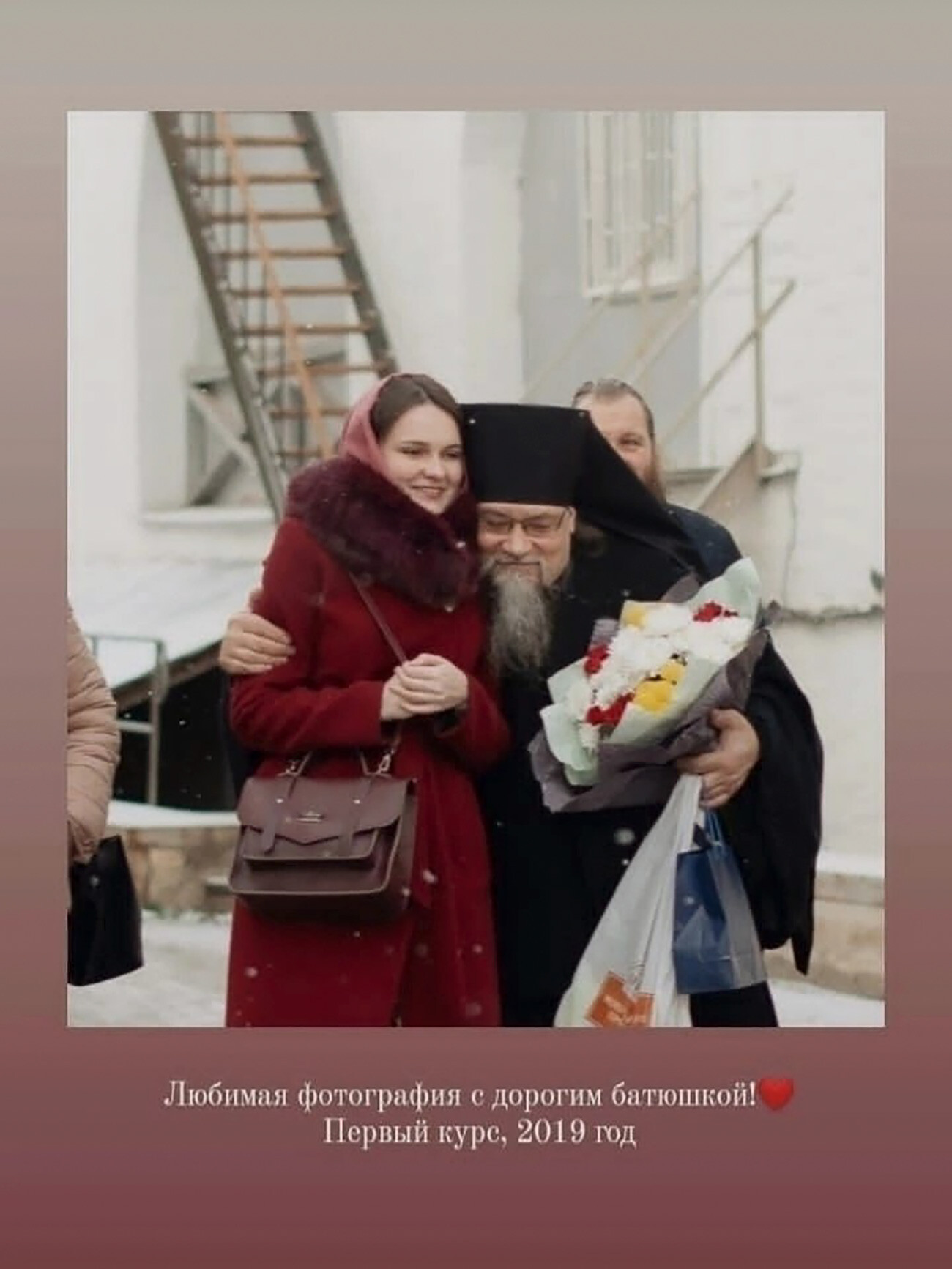
Anna with her teacher.
Anna KornilovaBut, all this does not prevent modern iconographers from painting in their own style. Few of them strive to create icons just to match the tradition: just "like in the early Byzantine period" or "like in the 13th century".
So, 23-year-old Anna Kornilova is rethinking an icon as a work of art and not just a cast or a copy, where all the folds of ancient images are repeated.
Delicate pastel shades, deep detailing, picturesqueness and harmonious color combinations, work on contrasts and even the use of near-designer graphic patterns are the distinctive features of Kornilova's icons.
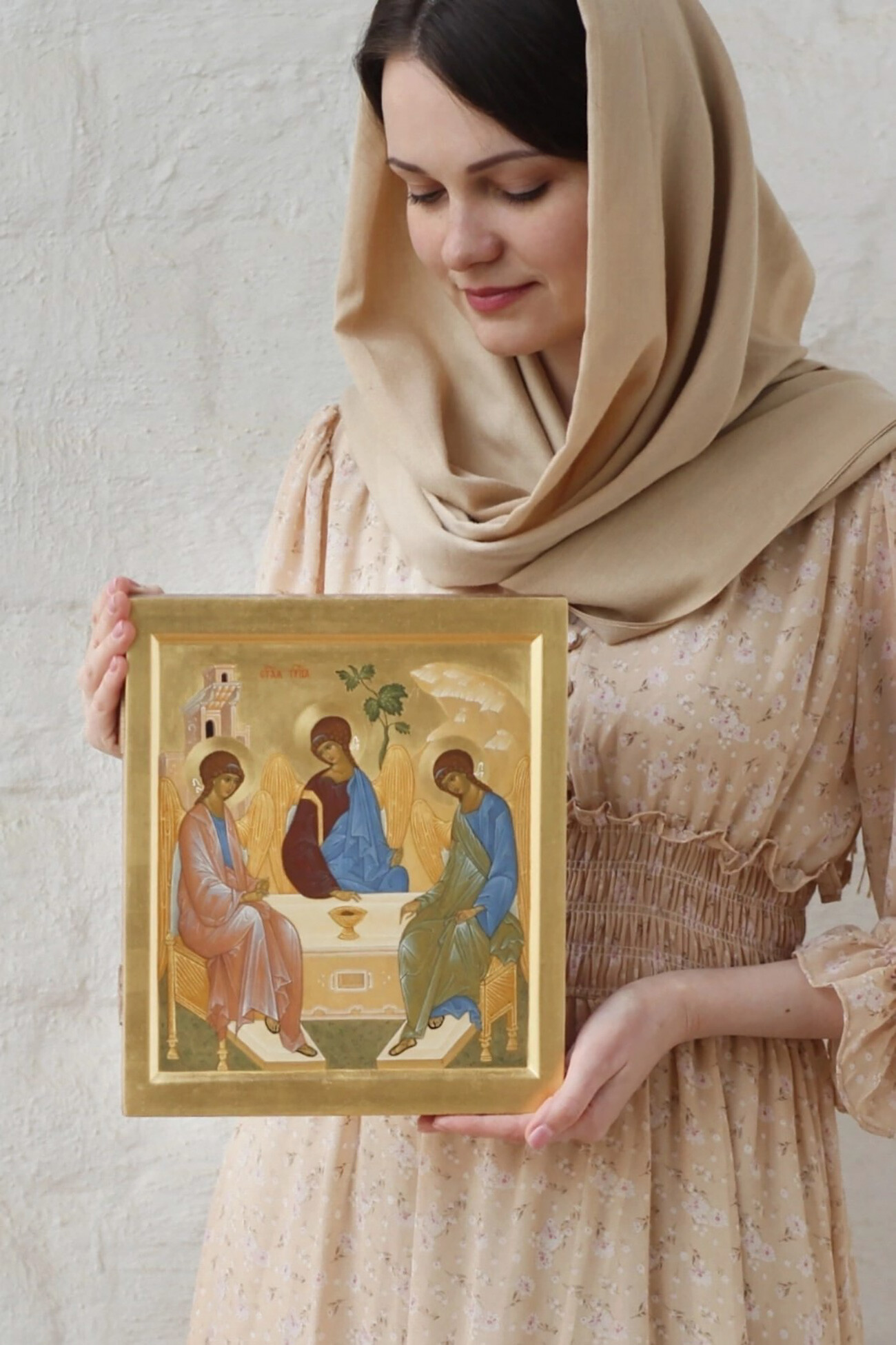
Icon of the Trinity.
Anna KornilovaShe studied at the Minsk State Gymnasium-College of Arts (Belarus). While her peers were studying to become graphic and motion designers, animators and tattoo artists, Anna firmly decided to take up icon painting.
She explained simply: "In my heart, I felt a great interest in the world of ancient icons, which holds so many secrets that it seems that a lifetime is not enough to reveal them.” So, Anna moved to Russia, where she studied at the Moscow Theological Academy at the faculty of icon painting.
It didn't work right away. The following is how she recalls working on her first icon:. "How much I suffered with it... I cleaned it off five times! And everything had to be done all over again. Either the color didn’t match or the layers were too thick... I remember after every attempt, I would almost give up and think - maybe this isn’t for me after all? Having painted watercolors all my life, it was very difficult for me to adapt to the new technique of painting with egg tempera. The strokes were uneven, everything rolled up, I tried fillings - nothing good! Gradually, with God's help, I finished my long-suffering tablet (a small double-sided icon on canvas - ed.)!"
Icon painters are not ordinary artists. In a sense, an iconographer gets spiritually closer to those they paint, because they constantly pray and fast. At least, this is what the church prescribes.
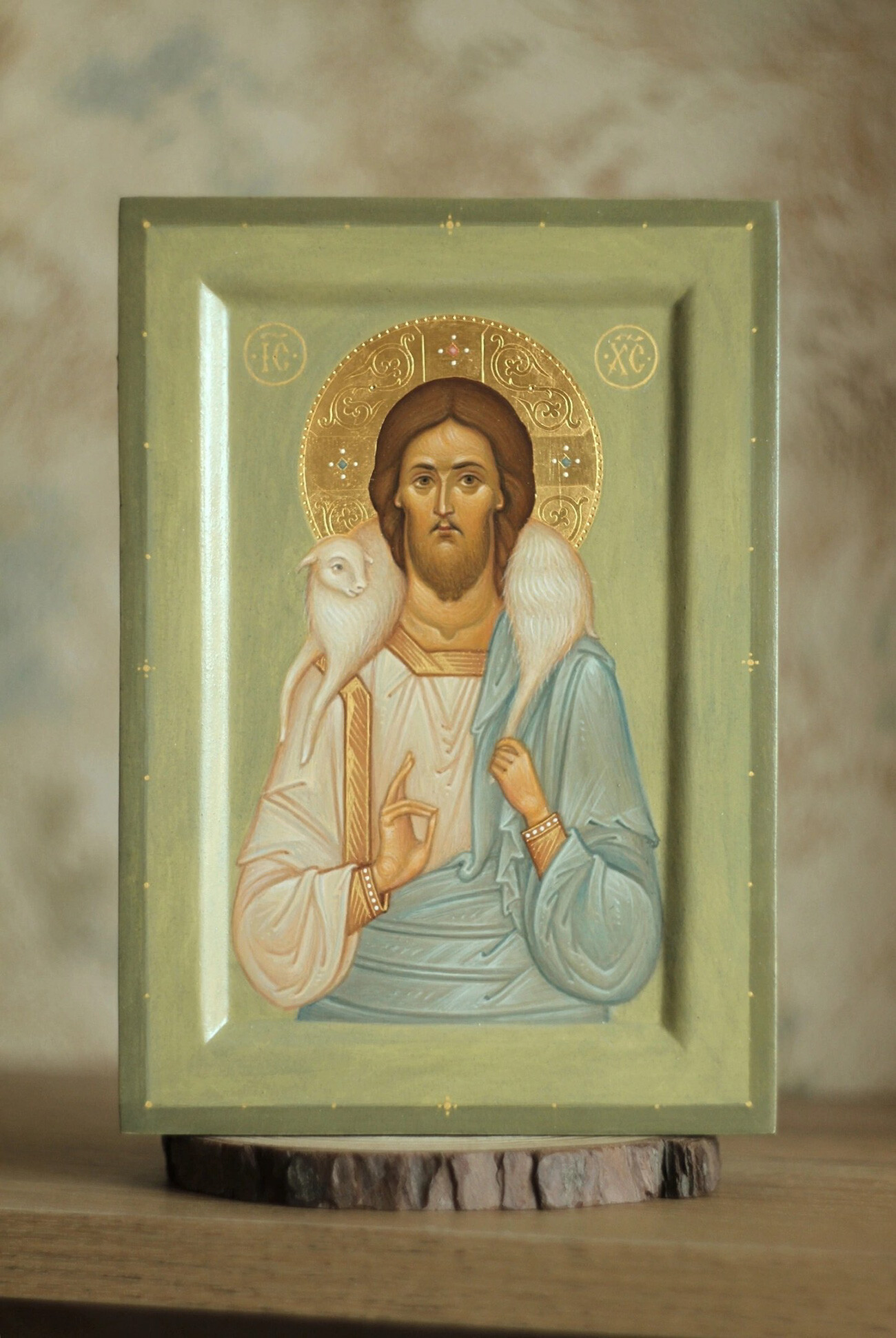
The icon of the Savior.
Anna KornilovaThe main rule when painting an icon is not to paint in a bad mood. Audio recordings of church hymns, the lives of saints and the Gospel help Anna get ready for work and drive away unnecessary thoughts about everyday life.
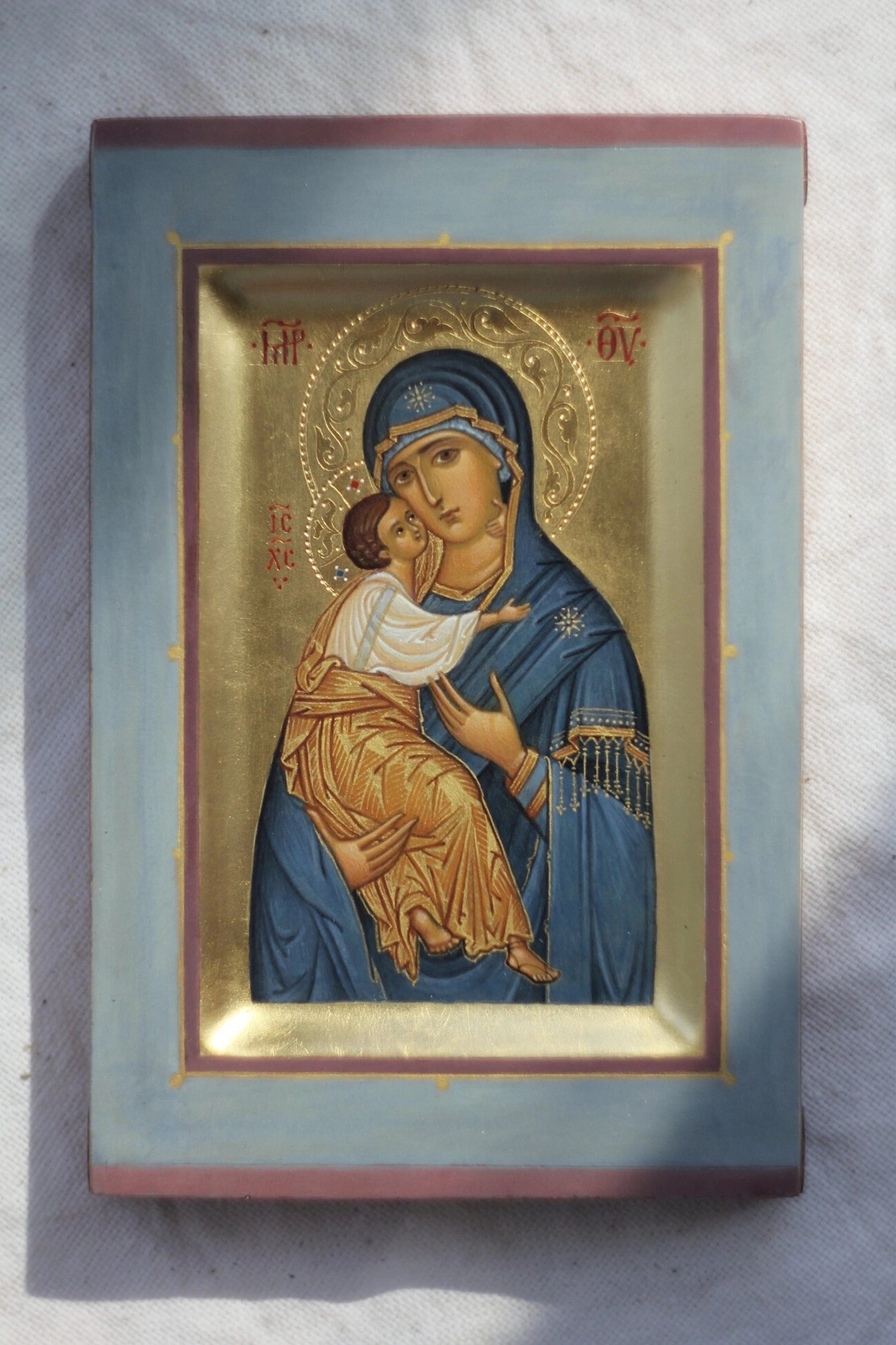
Vladimir Icon of the Mother of God.
Anna Kornilova"For an iconographer, it is very important to try to be mindful in prayer during the process of work, because they are, in fact, a brush in God's hands. The iconographer creates the icon with God's help," Anna explains.
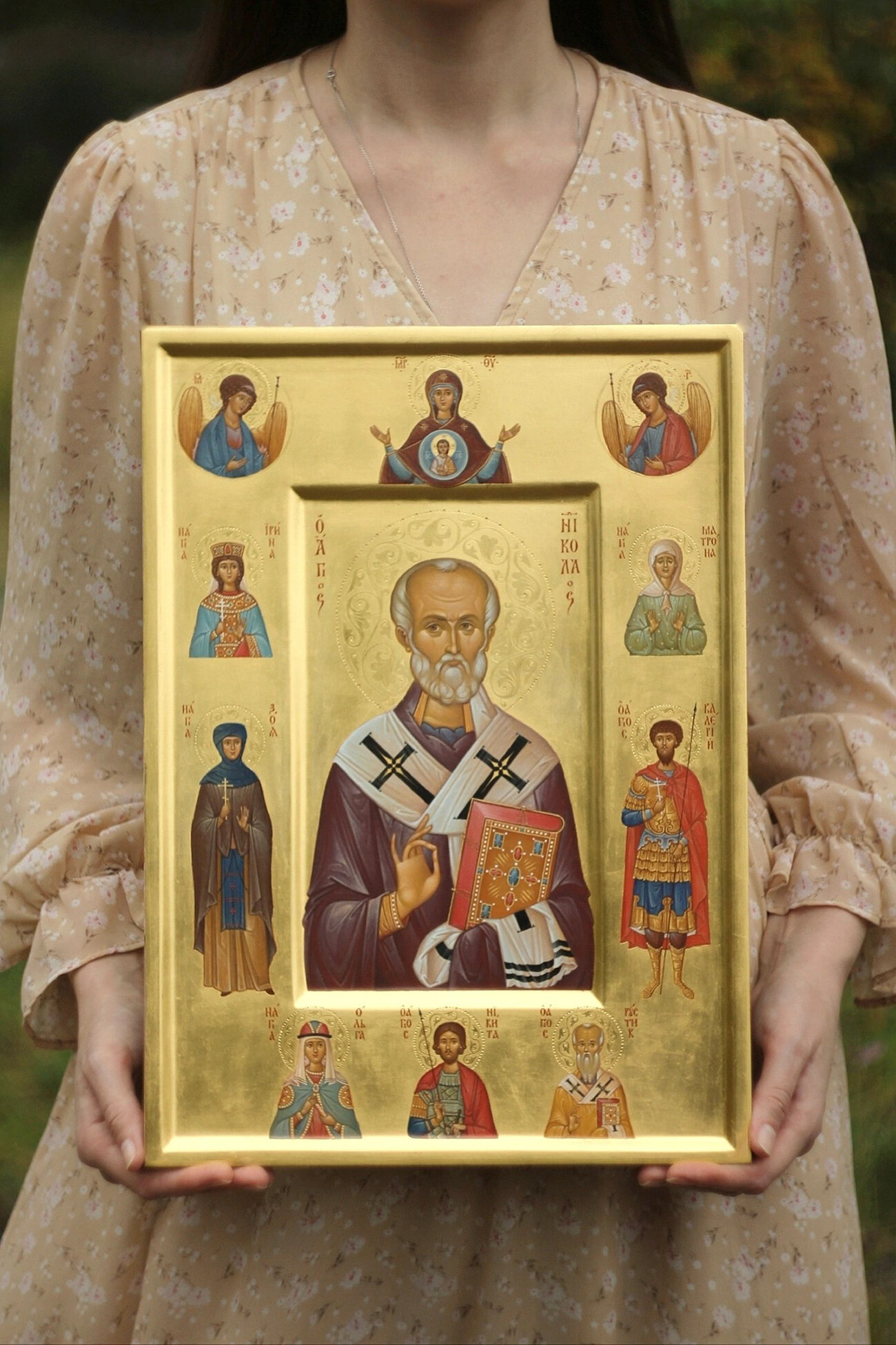
Family icon of St. Nicholas.
Anna KornilovaOrders come from private customers and churches and, sometimes, icon painters have to work all day long.
"A small icon, a little smaller than the palm of your hand, can be painted in one day, a large temple image can take years to paint," she says. “But, it seems to me that the number of icons is not so important - what is important is what benefit those painted will bring, how many souls they will help in prayer, how many they will console, how many they will give joy.”
A modern icon painter earns an average of 50,000 rubles (approx. $500) a month, if they take mostly private orders. The price of an icon by Anna Kornilova starts from 8,000 rubles (approx. $80). Customers are mainly from Russia and Belarus. The craftswoman describes them as "ordinary people who want to make someone a valuable gift".
There are many icon painters in the industry, but there are practically no big customers - collectors - who are ready to spend an impressive amount on a purchase in Russia.
High competition often encourages many to focus on the external qualities of the image and the tastes of the customer and to adapt to market conditions. But, Anna considers this inappropriate.
The icon in all its silent beauty and majesty, according to Kornilova, is one of the main symbols of Russian civilization. No other artistic phenomenon, she says, has had such an all-encompassing meaning in Russia as the icon.
So what kind of a Russian icon is she? Anna replies: "Quiet, prayerful, steadfast, bottomless, meek, immensely rich... All these words can also describe the soul of a Russian person. Simple on the outside, but inside, immensely rich in God!”
Dear readers,
Our website and social media accounts are under threat of being restricted or banned, due to the current circumstances. So, to keep up with our latest content, simply do the following:
If using any of Russia Beyond's content, partly or in full, always provide an active hyperlink to the original material.
Subscribe
to our newsletter!
Get the week's best stories straight to your inbox